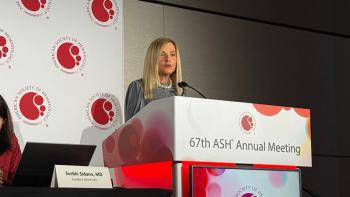
New ANCHOVY Trial Data Highlight Benefits of SMA Therapy
New data show the stark contrast between untreated infants with type 1 spinal muscular atrophy (SMA) and those who received risdiplam.
A new global study of infants with type 1
SMA is a progressive neuromuscular disease caused by a loss of functional survival motor neuron (SMN) protein associated with mutations or deletions of the SMN1 gene. The disease is typically classified based on severity and age of onset. The most common type is type 1 SMA, in which patients experience symptom onset as infants, are never able to sit without assistance, and usually do not live past the first few years of life if the disease goes untreated. Until recently, there were no treatment options available, but 3 drugs have been approved since 2016.
The new data come from the ANCHOVY study, a multicenter chart-review study that was designed to describe type 1 SMA outcomes from a broad geographical area. In a
The ANCHOVY trial began in 2008,
The outcomes were stark. The median age for reaching either death or permanent ventilation was 7.3 months, with an IQR of 5.9 to 10.5 months. The median age for permanent ventilation was 12.7 months, and the median age at death was 41.2 months.
None of the patients were ever able to sit without support, and none reached the milestones of crawling, standing, or walking.
The authors noted that those outcomes align with previous literature from the pretherapy era.
Conversely, the FIREFISH study
“While demographic and baseline disease characteristics were comparable between the ANCHOVY and FIREFISH Part 2 studies, the marked difference in event-free survival, achievement of motor milestones and initiation of feeding support for FIREFISH Part 2 participants compared with ANCHOVY patients further supports the benefit of risdiplam in patients with Type 1 SMA,” the authors concluded.
In addition to providing evidence of the benefits of therapy, the investigators said the ANCHOVY data were also useful because they spanned a greater geographic area than did previous research and therefore confirmed that data were similar across the world, even outside of the United States and Europe, which have been the settings for most of the existing literature.
Reference
Cances C, Vlodavets D, Comi GP, et al. Natural history of Type 1 spinal muscular atrophy: a retrospective, global, multicenter study. Orphanet J Rare Dis. 2022;17(1):300. doi:10.1186/s13023-022-02455-x
Newsletter
Stay ahead of policy, cost, and value—subscribe to AJMC for expert insights at the intersection of clinical care and health economics.









































